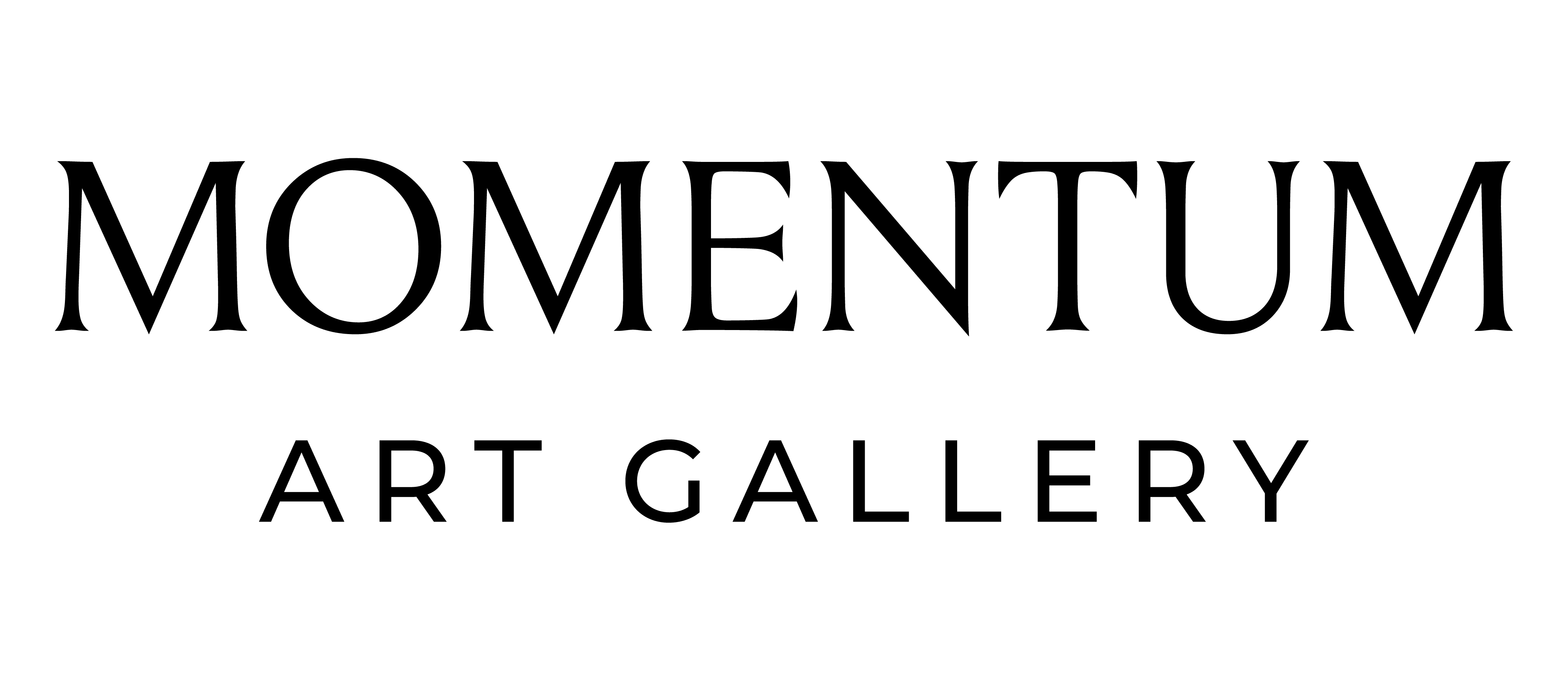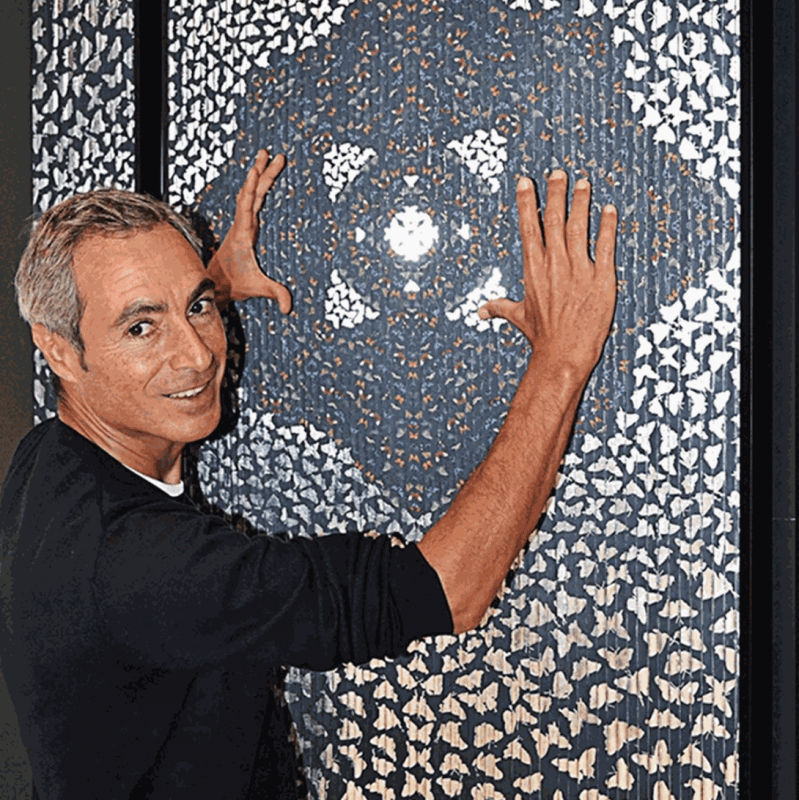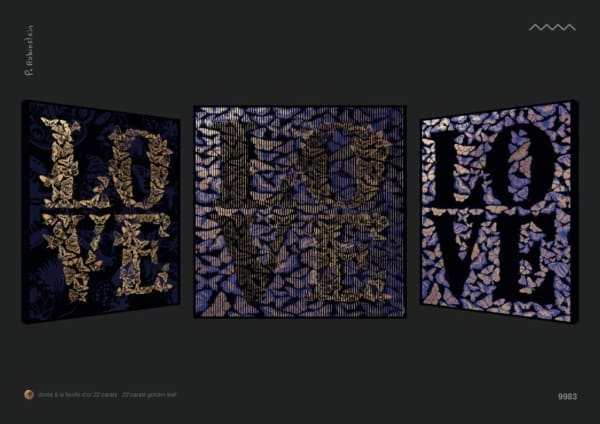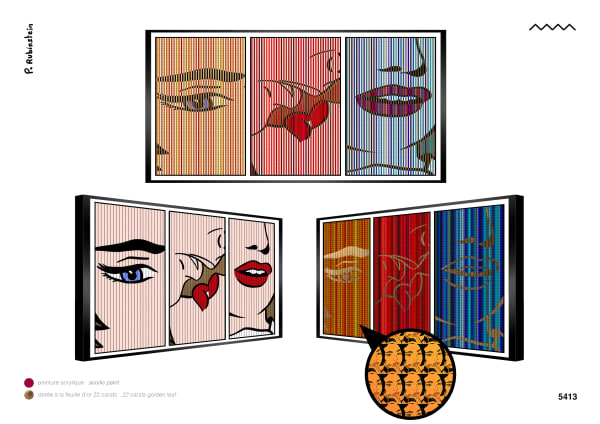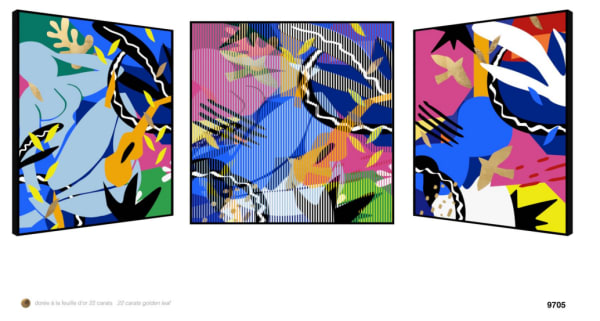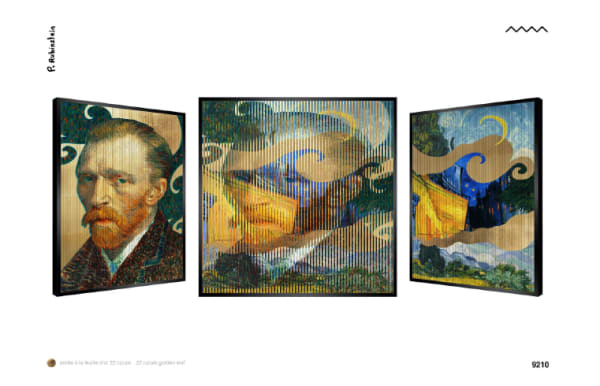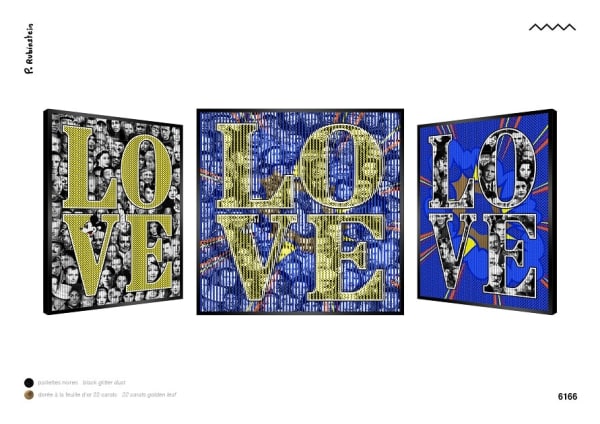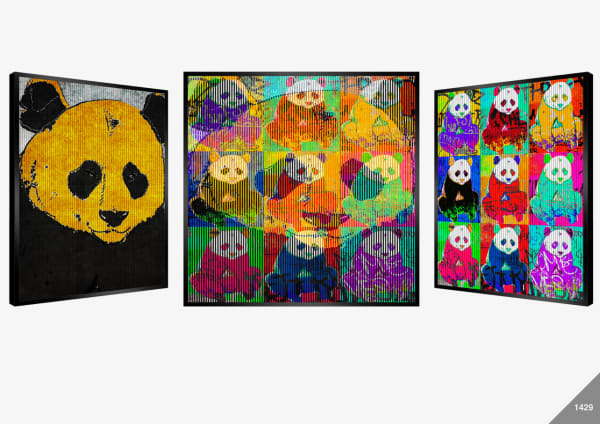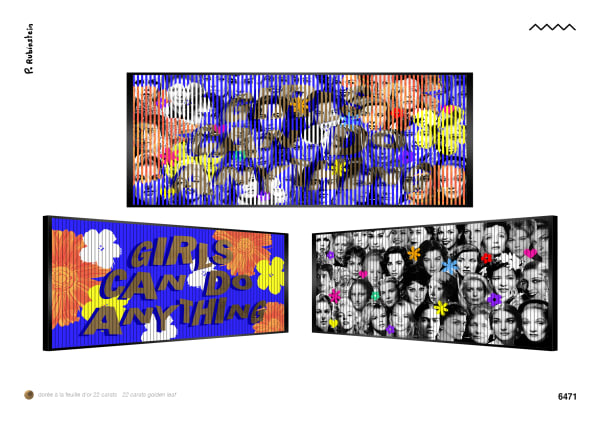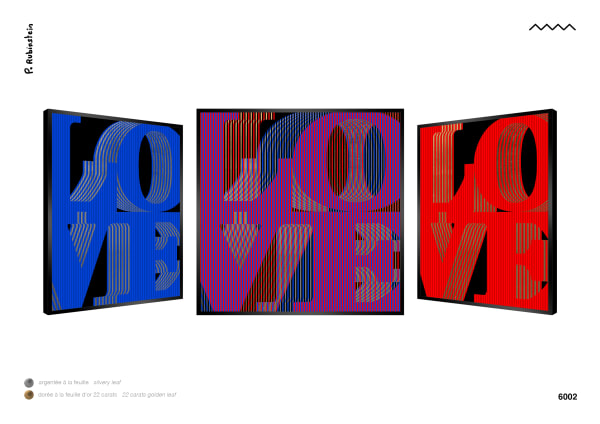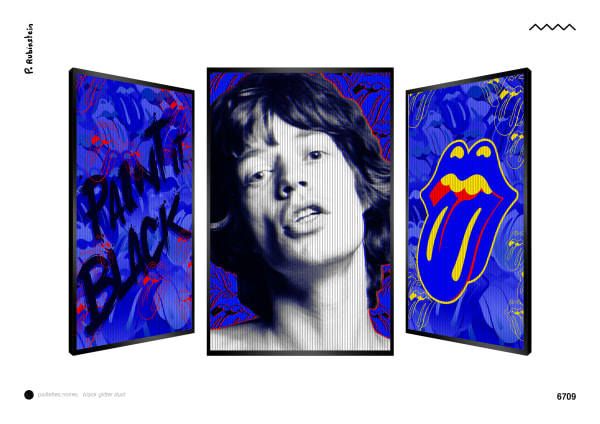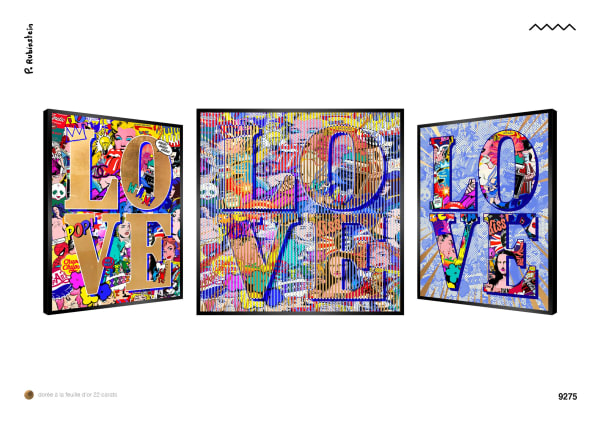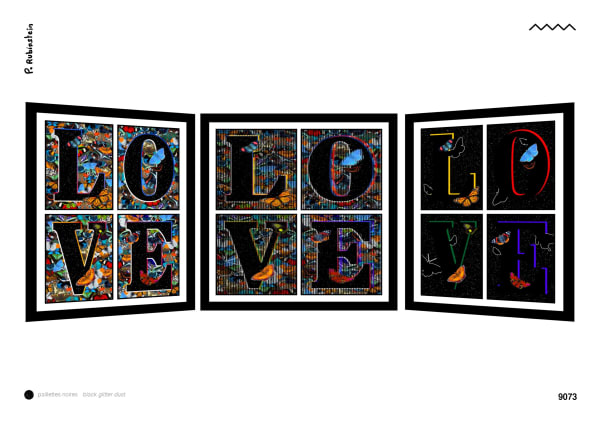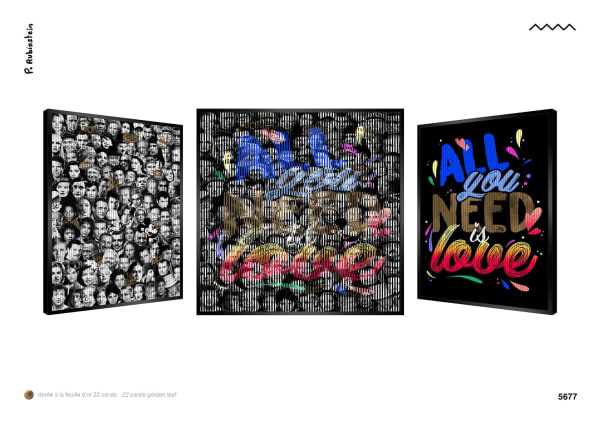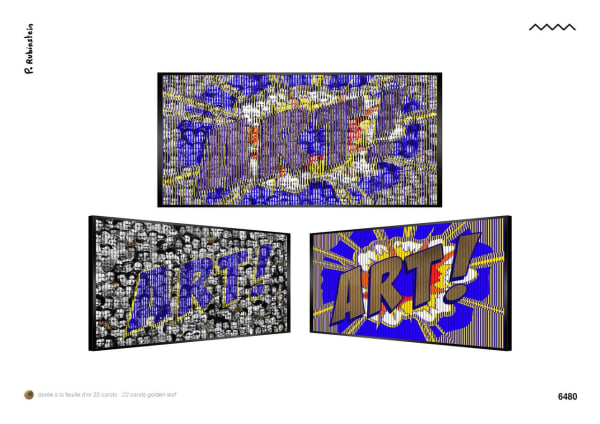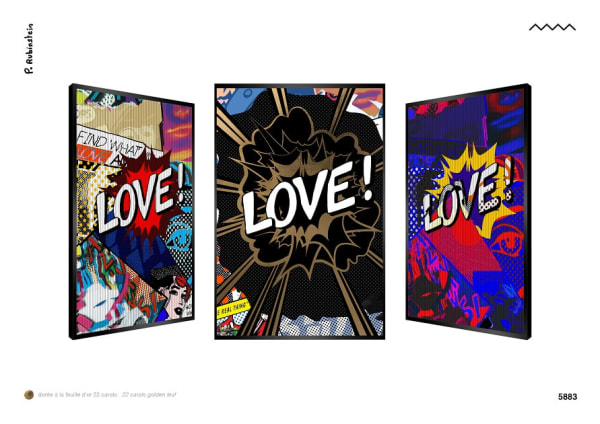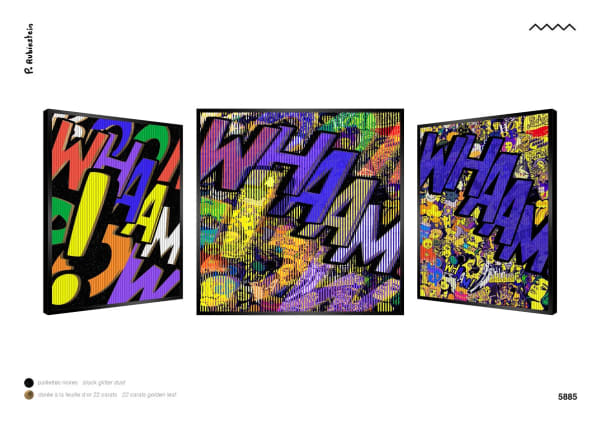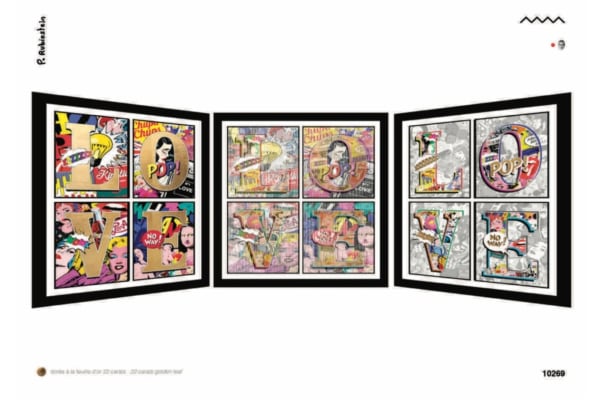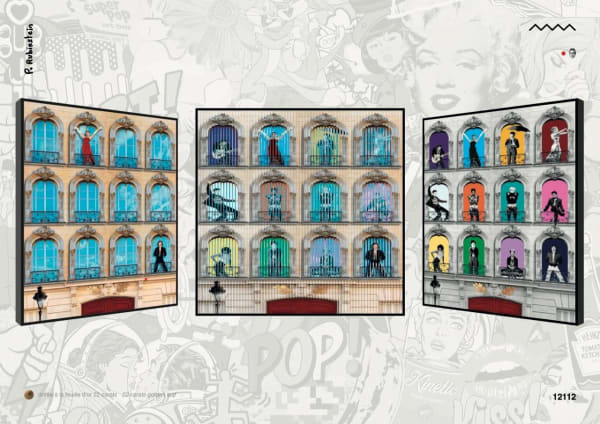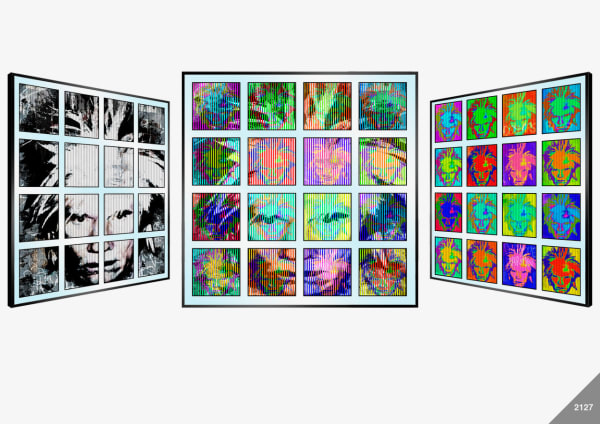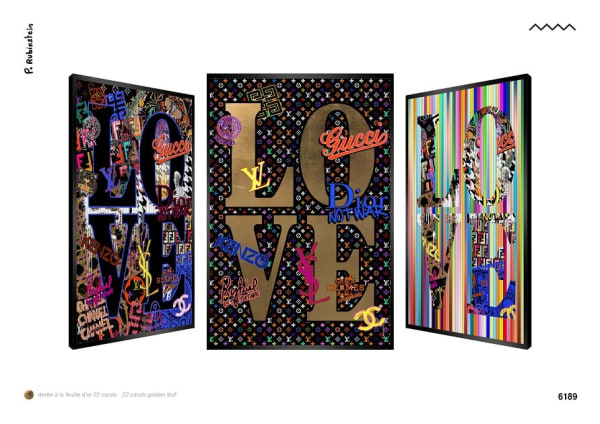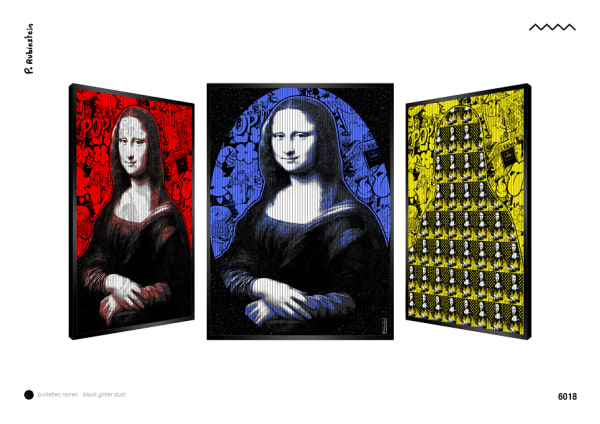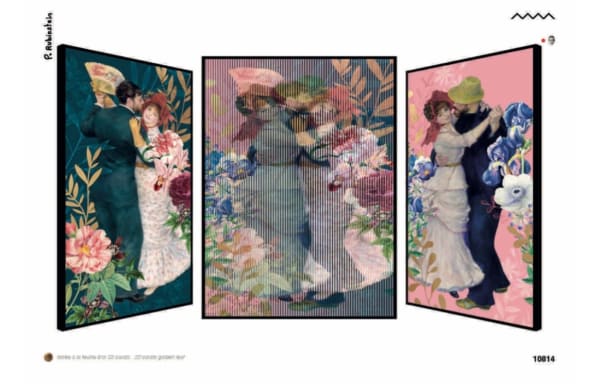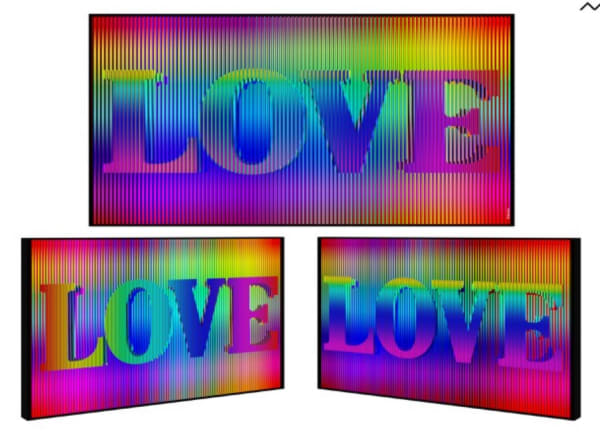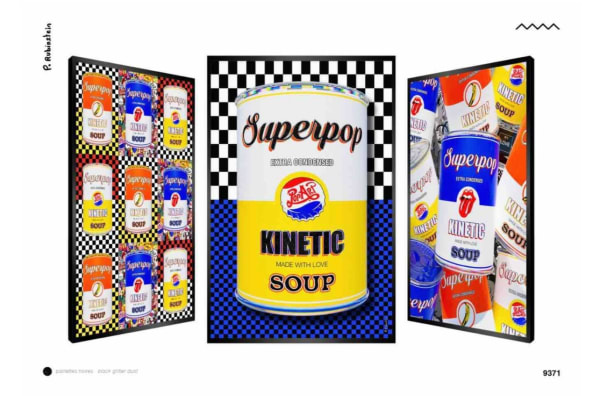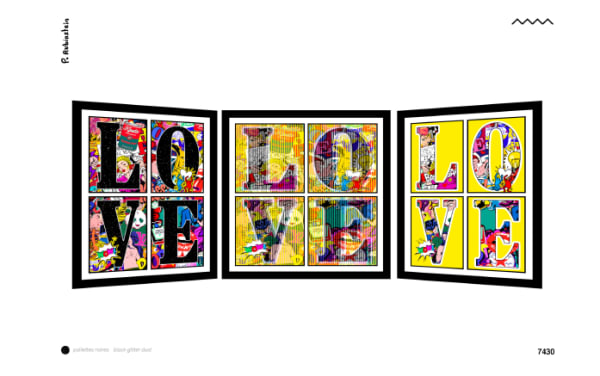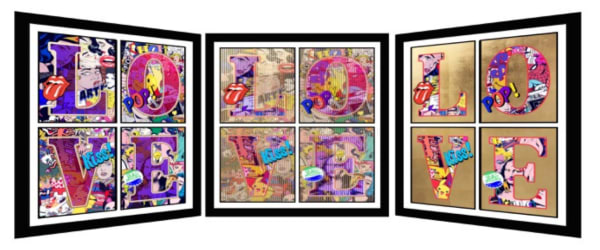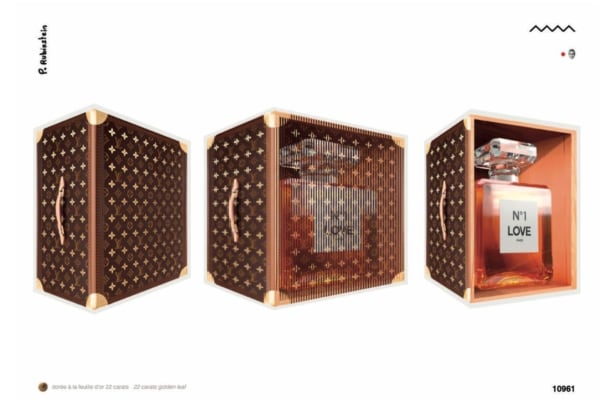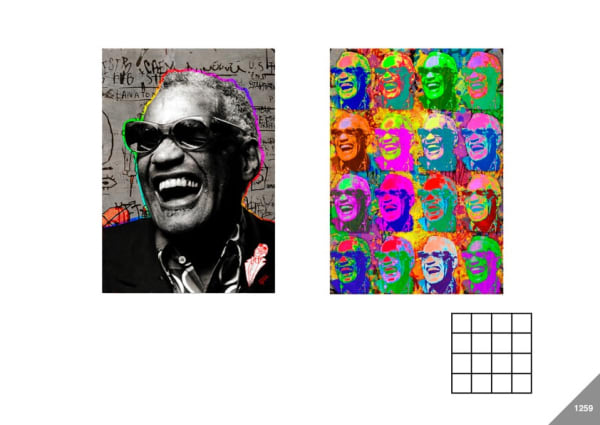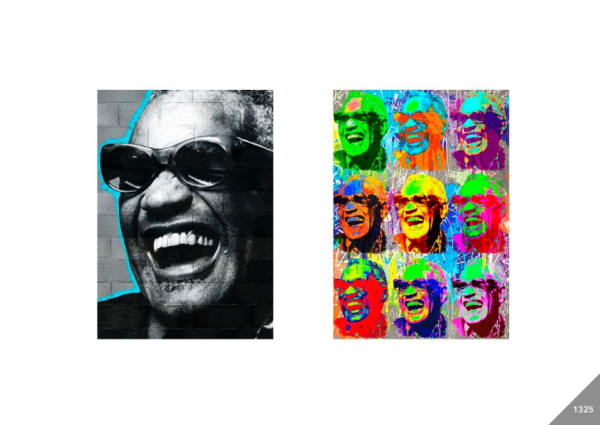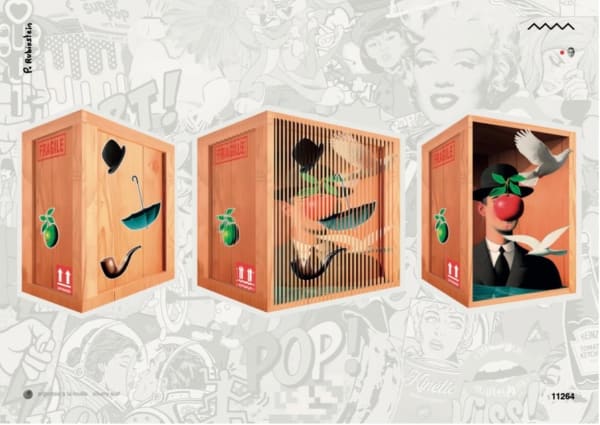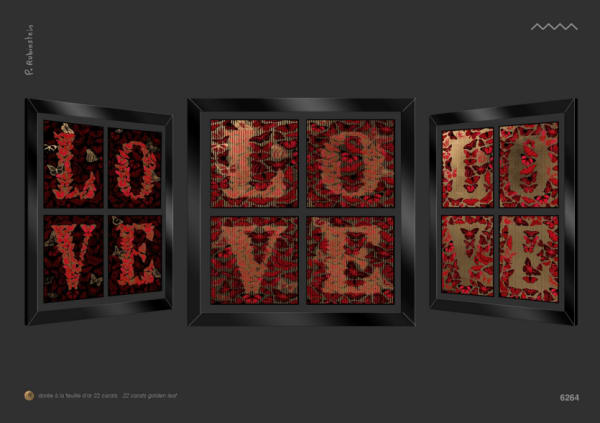Patrick Rubinstein
Patrick Rubinstein: A French Artist and Master of Pop Art in Motion
Patrick Rubinstein is a French artist born in 1960 in Paris. From an early age, he was immersed in a rich cultural environment, influenced by his mother’s love of cinema and his father’s passion for modern art as a collector. The influence of American pop culture and cinema also helped shape the energy and style of his work. As a teenager, he became interested in optical illusions and imagery, creating works inspired by pop culture and major contemporary icons.
His artistic journey has been marked by a strong affinity for kinetic and optical art—two movements he reinterprets through a distinctly personal style. The cultural movements of the time, such as British rock, also played a role in shaping his creative development. From the 2000s onward, he gained recognition on the international art scene, exhibiting in prestigious galleries. Today, his works are collected worldwide. His expertise in various artistic fields, including photography and graphic arts, underscores the importance of visual art in his creations.
The Art of Patrick Rubinstein: A True Master of Pop Art in Motion
Optical Art (Op Art)
Optical art is based on visual illusion, and Rubinstein has made it a playground for experimentation. Through effects like layering, folding, and cutting, he creates three-dimensional works where the viewer’s gaze becomes an integral part of the artwork.
His pieces play with light and perspective: a single artwork can reveal different images depending on the angle from which it is viewed. These optical effects are a hallmark of his style, where geometric precision and artistic freedom coexist.
Kinetic Art
Patrick Rubinstein is recognized as a leading figure in contemporary kinetic art. Inspired by masters such as Vasarely, Cruz-Diez, and Soto, he has developed a concept in which movement does not stem from mechanics, but from visual perception.
His works come alive as the viewer moves around them: an image transforms, a portrait morphs into an urban scene, a pop culture reference gives way to a more intimate allegory. This interactivity enhances the sensory experience for the viewer.
Patrick Rubinstein's Most Iconic Works
Rubinstein’s works are known for their visual richness and deep roots in pop culture. Among his most iconic pieces are portraits of Marilyn Monroe, Frida Kahlo, Audrey Hepburn, Elvis Presley, and Albert Einstein. These figures are reimagined and magnified through a dynamic, colorful style.
His artworks blend photography, painting, and collage, creating spectacular visual effects. Elements of street art are also present, through the use of typography, urban motifs, and nods to popular culture.
Rubinstein’s universe is deeply transversal—merging eras, styles, and techniques to create contemporary works that are both accessible and emotionally resonant.
Why Collect Patrick Rubinstein’s Art?
To collect a Patrick Rubinstein piece is to acquire more than just a painting—it is an investment in a powerful artistic universe that combines emotion, innovation, and aesthetics. His unique, carefully crafted concept appeals to fans of modern art, street art, and visual culture alike.
His works are made from high-quality materials, ensuring their longevity over time. Exhibited in numerous galleries around the world, they reflect his international acclaim.
Each piece is interactive—a bridge between the gaze and emotion, a fusion of image and movement. With photography, cultural iconography, and optical effects, every Rubinstein creation becomes a captivating visual experience.
-
 L'amour est ma loi bleu (9983), 2024
L'amour est ma loi bleu (9983), 2024 -
 Love in Colors
Love in Colors -
 A Story of Love
A Story of Love -
 Au Printemps (9705)
Au Printemps (9705) -
 Cloudy Vincent
Cloudy Vincent -
 Colorful de Lempicka
Colorful de Lempicka -
 Des papillons dans le ventre
Des papillons dans le ventre -
 Don't be so shy
Don't be so shy -
 MissMari
MissMari -
 new yorkers
new yorkers -
 Patrick Rubinstein - All the people
Patrick Rubinstein - All the people -
 Patrick Rubinstein - Amour et battements d'ailes
Patrick Rubinstein - Amour et battements d'ailes -
 Patrick Rubinstein - Art in knokke
Patrick Rubinstein - Art in knokke -
 Patrick Rubinstein - Bamboo Prod
Patrick Rubinstein - Bamboo Prod -
 Patrick Rubinstein - Beautiful Girls
Patrick Rubinstein - Beautiful Girls -
 Patrick Rubinstein - Behold my love (6002)
Patrick Rubinstein - Behold my love (6002) -
 Patrick Rubinstein - Big art theory
Patrick Rubinstein - Big art theory -
 Patrick Rubinstein - Black stone
Patrick Rubinstein - Black stone -
 Patrick Rubinstein - Blue + gold
Patrick Rubinstein - Blue + gold -
 Patrick Rubinstein - Butter in my life
Patrick Rubinstein - Butter in my life -
 Patrick Rubinstein - Centripetal Force (6304)
Patrick Rubinstein - Centripetal Force (6304) -
 Patrick Rubinstein - Coeur Boum Wahou
Patrick Rubinstein - Coeur Boum Wahou -
 Patrick Rubinstein - Colorful Street
Patrick Rubinstein - Colorful Street -
 Patrick Rubinstein - Country Dance (10617)
Patrick Rubinstein - Country Dance (10617) -
 Patrick Rubinstein - Crazy art
Patrick Rubinstein - Crazy art -
 Patrick Rubinstein - Dix part Joconde
Patrick Rubinstein - Dix part Joconde -
 Patrick Rubinstein - Explosion of Pop Love
Patrick Rubinstein - Explosion of Pop Love -
 Patrick Rubinstein - Famous whaam
Patrick Rubinstein - Famous whaam -
 Patrick Rubinstein - Featherly Yours
Patrick Rubinstein - Featherly Yours -
 Patrick Rubinstein - From pop
Patrick Rubinstein - From pop -
 Patrick Rubinstein - Golden wings
Patrick Rubinstein - Golden wings -
 Patrick Rubinstein - Hop pop pop!
Patrick Rubinstein - Hop pop pop! -
 Patrick Rubinstein - Il y a du monde aux balcons
Patrick Rubinstein - Il y a du monde aux balcons -
 Patrick Rubinstein - L'artiste
Patrick Rubinstein - L'artiste -
 Patrick Rubinstein - L'heure bleue
Patrick Rubinstein - L'heure bleue -
 Patrick Rubinstein - La folie des marques
Patrick Rubinstein - La folie des marques -
 Patrick Rubinstein - La jolie Mona
Patrick Rubinstein - La jolie Mona -
 Patrick Rubinstein - La nuit étoilée de Matisse (10968)
Patrick Rubinstein - La nuit étoilée de Matisse (10968) -
 Patrick Rubinstein - Larve - chenille - papillon
Patrick Rubinstein - Larve - chenille - papillon -
 Patrick Rubinstein - Le bal des iris
Patrick Rubinstein - Le bal des iris -
 Patrick Rubinstein - Le gouze
Patrick Rubinstein - Le gouze -
 Patrick Rubinstein - Le voyageur rêveur
Patrick Rubinstein - Le voyageur rêveur -
 Patrick Rubinstein - Léger comme l’air
Patrick Rubinstein - Léger comme l’air -
 Patrick Rubinstein - Les bas d'or (9703)
Patrick Rubinstein - Les bas d'or (9703) -
 Patrick Rubinstein - Love arc en ciel (9808)
Patrick Rubinstein - Love arc en ciel (9808) -
 Patrick Rubinstein - Love en 3D
Patrick Rubinstein - Love en 3D -
 Patrick Rubinstein - Modern Era Soup III
Patrick Rubinstein - Modern Era Soup III -
 Patrick Rubinstein - Nounours sauvage
Patrick Rubinstein - Nounours sauvage -
 Patrick Rubinstein - Ohlala
Patrick Rubinstein - Ohlala -
 Patrick Rubinstein - On y croit
Patrick Rubinstein - On y croit -
 Patrick Rubinstein - Only true love
Patrick Rubinstein - Only true love -
 Patrick Rubinstein - Optique 4 (9791)
Patrick Rubinstein - Optique 4 (9791) -
 Patrick Rubinstein - Panpandada
Patrick Rubinstein - Panpandada -
 Patrick Rubinstein - Pop Lover (9900)
Patrick Rubinstein - Pop Lover (9900) -
 Patrick Rubinstein - Pop Mona
Patrick Rubinstein - Pop Mona -
 Patrick Rubinstein - Pop Panda
Patrick Rubinstein - Pop Panda -
 Patrick Rubinstein - Pop star (9901)
Patrick Rubinstein - Pop star (9901) -
 Patrick Rubinstein - Reflective colors
Patrick Rubinstein - Reflective colors -
 Patrick Rubinstein - Scented box
Patrick Rubinstein - Scented box -
 Patrick Rubinstein - Smile of the Genius
Patrick Rubinstein - Smile of the Genius -
 Patrick Rubinstein - Soul is Mine
Patrick Rubinstein - Soul is Mine -
 Patrick Rubinstein - Soupala
Patrick Rubinstein - Soupala -
 Patrick Rubinstein - Sparkling Henri (11247)
Patrick Rubinstein - Sparkling Henri (11247) -
 Patrick Rubinstein - Surreal Shipping
Patrick Rubinstein - Surreal Shipping -
 Patrick Rubinstein - Toy for big kids
Patrick Rubinstein - Toy for big kids -
 Patrick Rubinstein - True Sad Story
Patrick Rubinstein - True Sad Story -
 Patrick Rubinstein - Under Mona
Patrick Rubinstein - Under Mona -
 Patrick Rubinstein - Une diva, du pop, du flouze et du rock
Patrick Rubinstein - Une diva, du pop, du flouze et du rock -
 Patrick Rubinstein - Volons, Volons
Patrick Rubinstein - Volons, Volons -
 Patrick Rubinstein - Y'a de l'amour dans l'air
Patrick Rubinstein - Y'a de l'amour dans l'air -
 Patrick Rubinstein -Petit Bisou
Patrick Rubinstein -Petit Bisou -
 Patrick Rubinstein -Sculpture
Patrick Rubinstein -Sculpture -
 Plouf! Dans la baignoire
Plouf! Dans la baignoire -
 Rock in baby
Rock in baby -
 Soup shipping
Soup shipping -
 That's all love
That's all love -
 This is Mickey
This is Mickey
